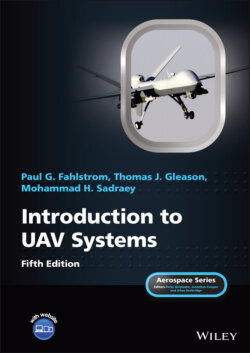Читать книгу Introduction to UAV Systems - Mohammad H. Sadraey - Страница 24
1.2.8 Long‐Range Long‐Endurance Operations
ОглавлениеAfter the 9/11/2001 terrorist attack on the World Trade Center in New York City, and during wars in Iraq and Afghanistan, US military explored the high value of UAVs in wars and even peace‐time operations. Afterward, there were multiple UAV applications around the world including the war with ISIS and Al‐Qaeda (2013–2017), many of which were long‐range long‐endurance wars. Three top UAVs that were employed for long‐range long‐endurance operations around the world are RQ‐4 Global Hawk, RQ‐1 Predator, and MQ‐9 Reaper. The Reaper with its missiles, sensors, and relatively long endurance is a UAV that transformed military combat.
During Operation Enduring Freedom (from November to September 2002 in Afghanistan), the Global Hawk provided more than 17,000 near‐real‐time, high‐resolution intelligence, surveillance, and reconnaissance images, flying more than 60 combat missions and logging more than 1,200 combat hours. By 2015, the Global Hawk surpassed 140,000 flight hours and 100,000 combat flight hours and exceeded operational performance targets. The following summarizes three recent projects for HALE UAVs with a pseudo‐satellite mission.
In 2020, in partnership with NASA, the Swift Engineering [3] has developed the Swift HALE UAV to demonstrate how a successful high‐altitude, long‐endurance flight can expand science research in a cost‐efficient and timely manner. This solar‐powered UAV has a wingspan of 72 ft and weighs less than 180 lb, flies 10‐ to 15‐lb payloads at a time, and is designed to operate at an altitude of 70,000 ft for 30 days or more.
Furthermore, BAE Systems is developing a solar‐powered, stratosphere‐flying UAV that can act as a backup option to disabled communications satellites. The Phasa‐35 is designed to operate at altitudes of up to 70,000 ft. This HALE UAV with a wing span of 115 ft can remain in the air for up to a year without returning to Earth.
Moreover, the Airbus Zephyr unmanned aerial system has been designed and tested as an ultra‐light high‐altitude pseudo‐satellite. However, in 2020, the UAV broke up in flight after encountering unstable atmospheric conditions, which resulted in a series of uncommanded rolls and an uncontrolled spiral descent.
